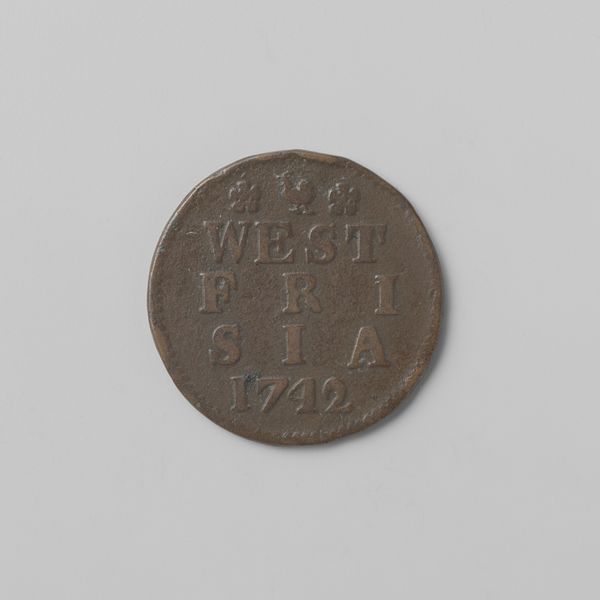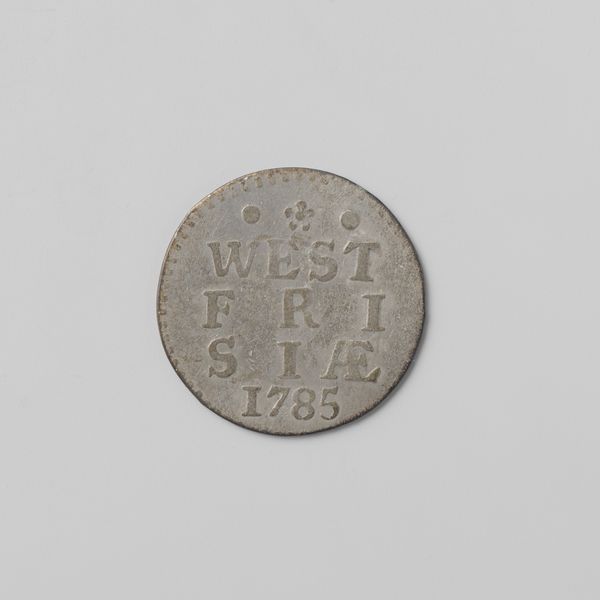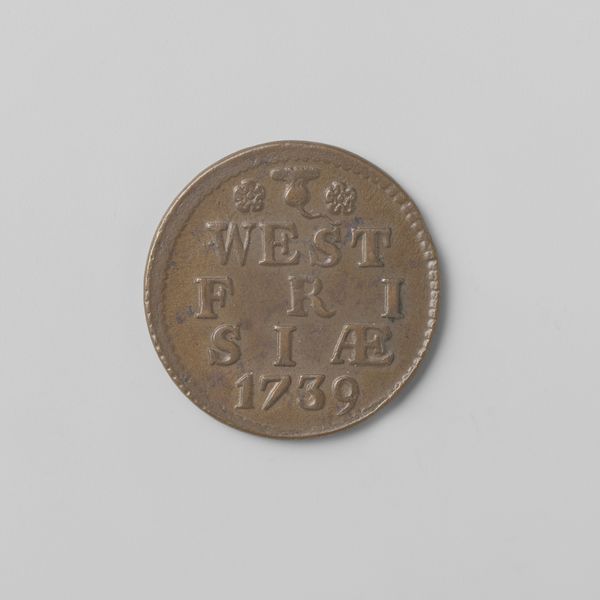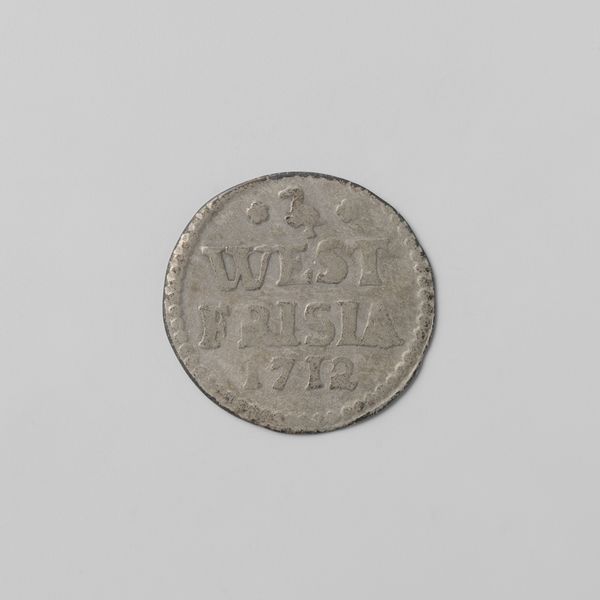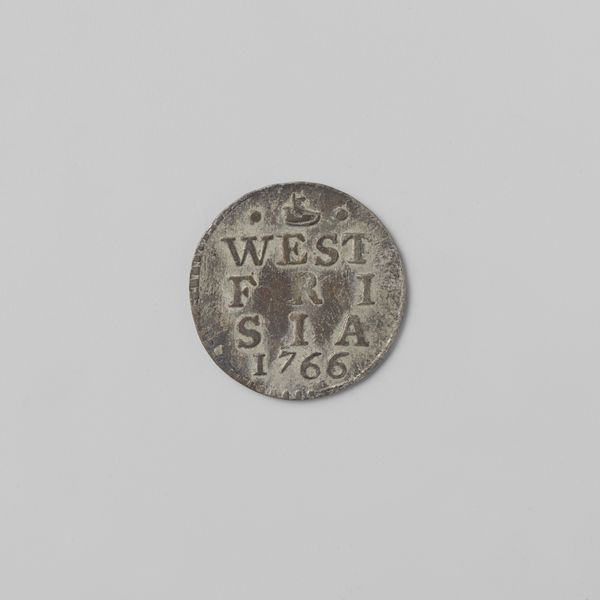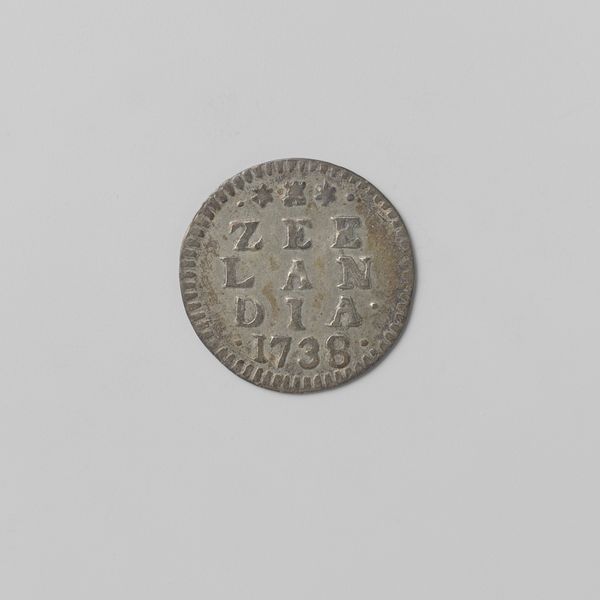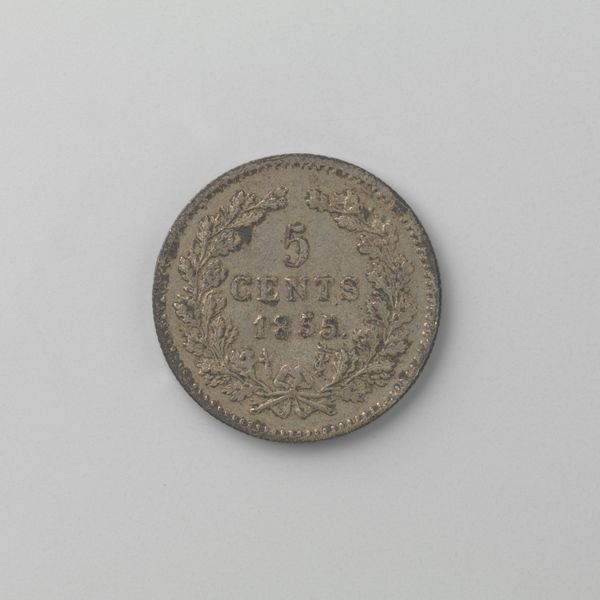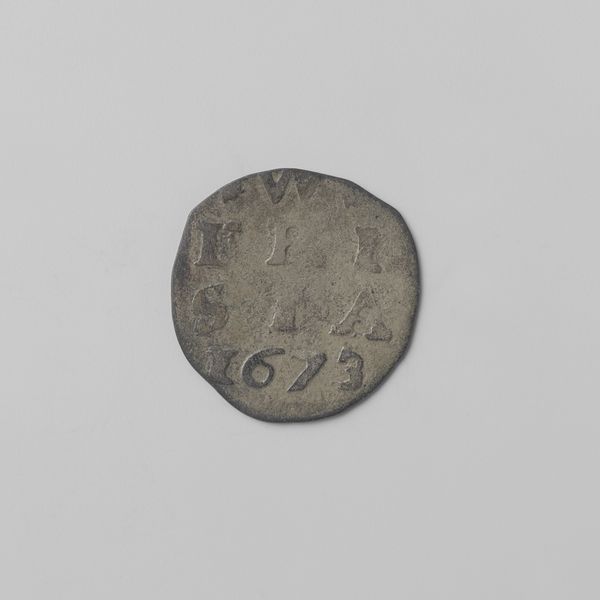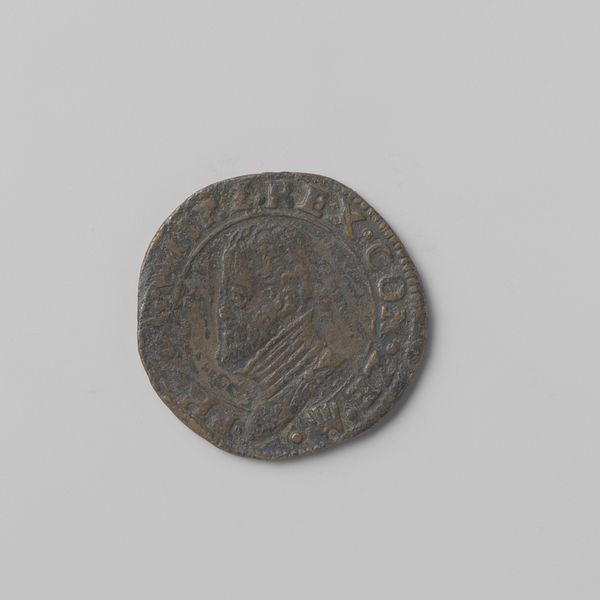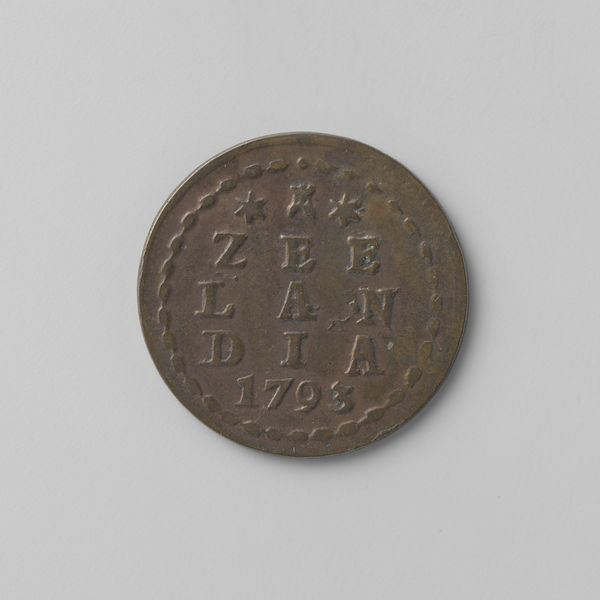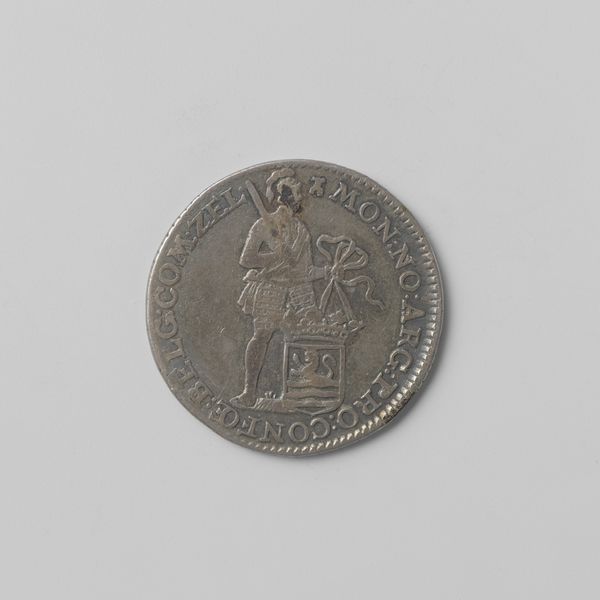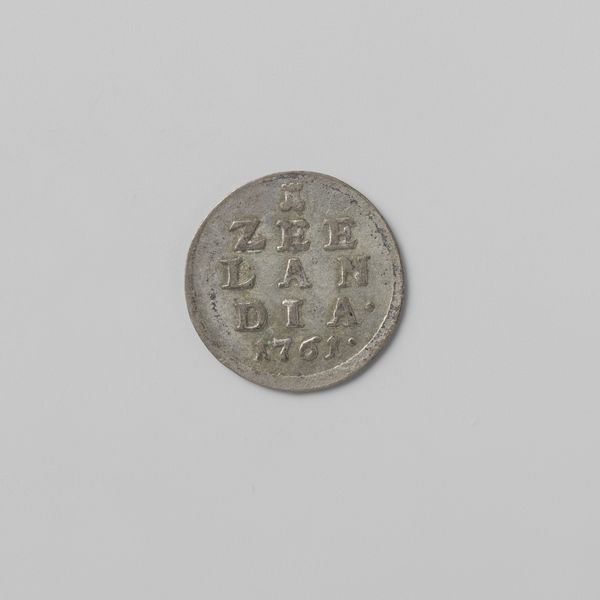
print, metal, engraving
#
studio photography
#
product studio photography
#
product shot
#
antique finish
#
dutch-golden-age
# print
#
metal
#
polished
#
bold defined shape
#
embossed
#
metallic object render
#
product mock up
#
cutout
#
engraving
Dimensions: diameter 2.2 cm, weight 3.60 gr
Copyright: Rijks Museum: Open Domain
Curator: This is a Westfriese Duit, a coin minted in 1739 in West Friesland, which is a region in the province of North Holland in the Netherlands. It’s struck in silver, or what’s known as 'afslag in zilver.' Editor: It looks so worn. A relic of a world rapidly transforming. Looking at it, I think about value; both monetary, and the symbolic weight it carries now, almost three centuries later. Curator: Exactly! These coins are more than just currency. They represent West Friesland’s participation in global trade during the Dutch Golden Age, and their own regional identity. You can see the words “WEST FRISIAE” clearly embossed. Above those words, are what appears to be decorative florets. They signify regional prosperity and a desire for local autonomy in this era. Editor: That's interesting that you note that flourish. The desire for autonomy rings loud now. Thinking about trade and autonomy during the 18th century in the Netherlands inevitably calls to mind Dutch colonial endeavors at the time. So many objects like these belie complex and contradictory political realities. The aesthetic sheen masks centuries of exploitation. What stories could this small piece of silver tell? Curator: Certainly, currency always raises questions about colonial exchange, however, in this instance, the emphasis on the coin is more about localized value than extraction or global networks. Note the date—1739. The coin's symbology relates more to establishing West Friesland's place within the broader Dutch Republic at a pivotal time of economic transformation and artistic innovation than to Dutch overseas operations. The engraving evokes symbols that held immense emotional value for people living in that specific time and location. Editor: True, these localized symbols, that attempt at cultivating a sense of shared cultural belonging—the coin itself might have functioned as a form of early propaganda? Who handled it? Whose pockets did it line? Its physical presence tells the story of a tangible connection to that region’s historical narrative. Curator: Precisely. And while diminutive, it mirrors so many grander themes of trade, autonomy, and cultural identity—echoes resonating even now. Editor: Thinking about the economic landscape and localized impact gives it this unexpected contemporary edge—in terms of global debates surrounding localized value. It highlights how everyday artifacts gain layers of meaning. Curator: Indeed, a potent, pocket-sized history lesson!
Comments
No comments
Be the first to comment and join the conversation on the ultimate creative platform.
